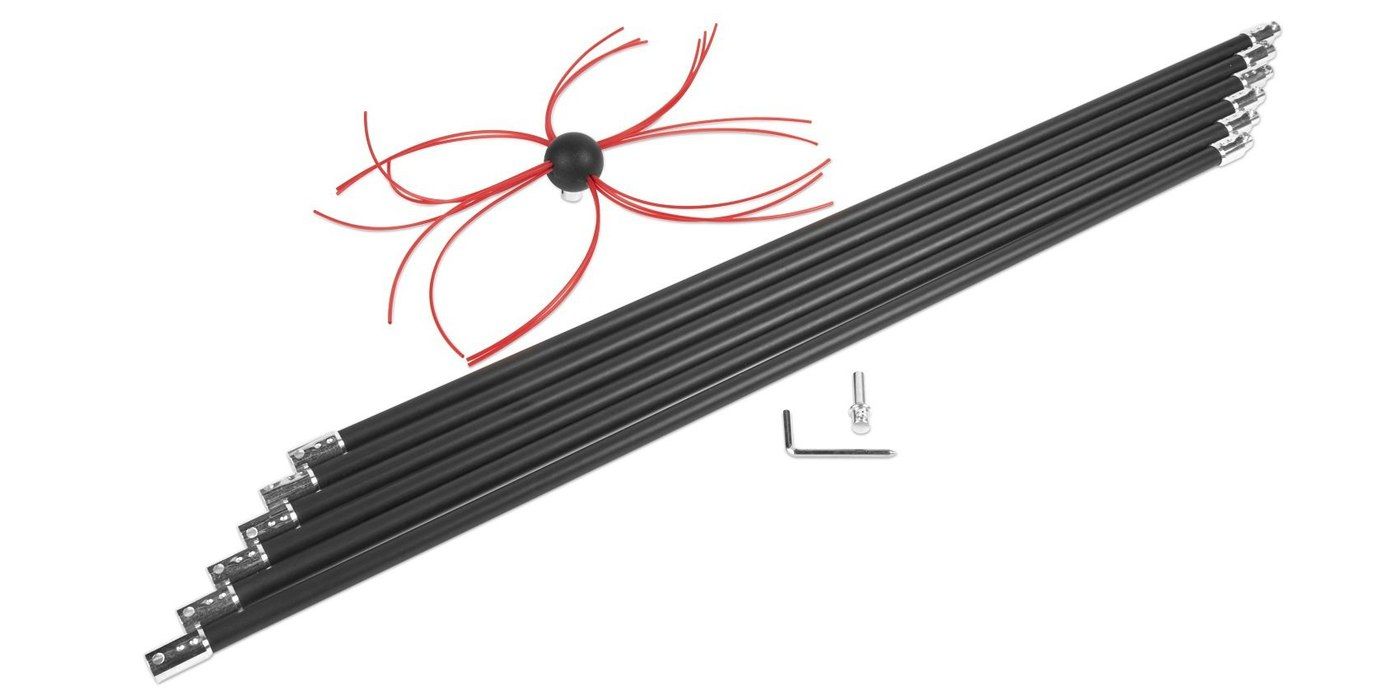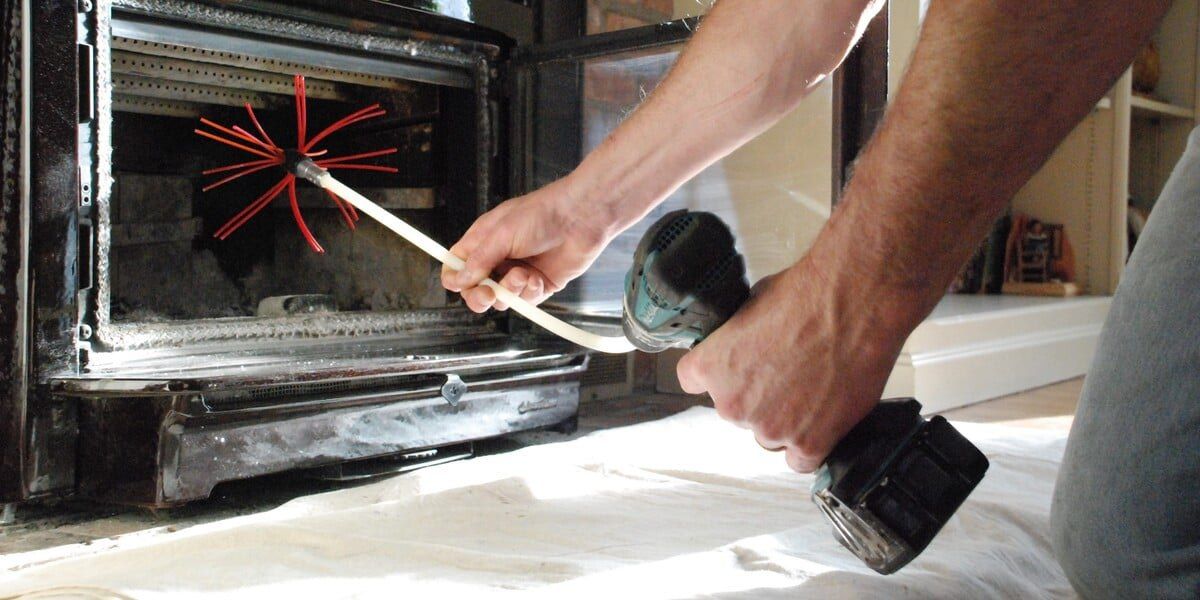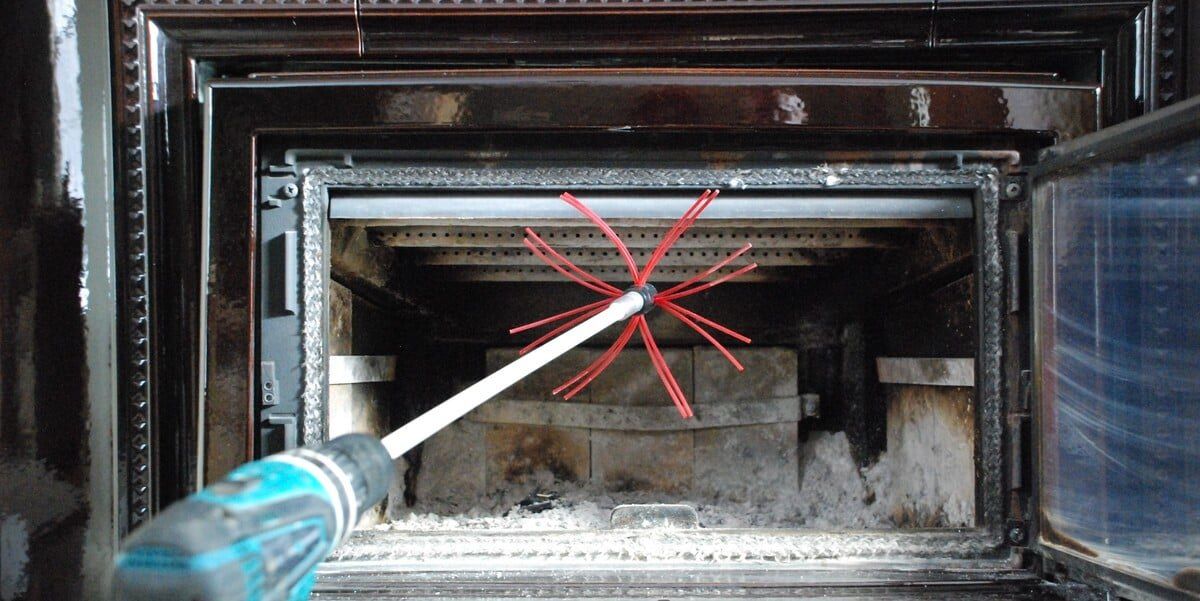Subscribe now and get our latest blog and video content delivered straight to your inbox.
Gardus SootEater Chimney Cleaning Kit: An Honest Review

Dec 13, 2023
“Chimney sweep” is a job that goes back hundreds of years and will probably continue to be around for hundreds more. As long as homeowners have wood burning appliances like fireplaces or stoves in their homes, they’ll need someone to clean the flue pipes.
But what if you could easily clean your own chimney with professional-level results?
That’s what SootEater offers. It’s a rotary chimney cleaning system by Gardus (a HY-C company) that allows you to clean your own chimney from the ground up.
So, what comes with a SootEater kit? What are its pros and cons, and should you get one for yourself?
That’s what we’ll cover in this guide. By the time you’re finished here, you’ll understand what SootEater is, how it works, what comes in its kit, and whether or not this chimney cleaning tool will work well for your wood burning appliance.
And while we manufacture this item, we’re going to remain as objective as possible in this guide. The goal is not simply to sell a SootEater to everyone who reads this piece. Rather, the goal is to help you figure out if SootEater is a good fit for you.
What Is SootEater?
Like our other Gardus tools (i.e. SpinAway and GutterSweep), SootEater is a rotary cleaning tool. It’s powered by a corded or battery-operated drill, and it uses the torque that the drill creates to clean the inside of your flue tile and remove soot and creosote buildup.
SootEater utilizes polypropylene rods that connect via button links to extend all the way up a chimney flue. A whip head with flexible strands scours the side of the flue tile, knocking off ash, soot, and creosote down into your firebox.
What’s Included in the SootEater Kit?

The contents included in the SootEater kit are fairly straightforward:
- 6 flexible three-feet-long polypropylene rods
- 1 whip head
- 1 drill adapter
- 1 rod separator tool
- 1 52” x 48” plastic cover
It’s important to note that a drill is not included with the SootEater. If you need more extension rods, they’re available to purchase separately. Replacement whip heads are also available separately.
Three Pros of SootEater

1. It Helps Save Money
Chimney sweeps tend to charge a pretty penny for their work. On average, it costs between $100 and $400 to have your chimney professionally cleaned by a chimney sweep. Considering you should clean your chimney once a year, those costs add up quickly.
SootEater, on the other hand, averages around $65 at retail (depending on where you buy one). Considering you can use it year after year and a replacement whip head only costs around $20, it isn’t hard to see how SootEater can save a lot of money on chimney cleaning costs.
2. It Increases the Safety and Efficiency of Your Chimney
There are a lot of downsides to a dirty chimney. Creosote in particular is highly flammable, and if it’s left to build up, it can cause a fire in your flue. SootEater sweeps away creosote buildup, making for a much safer wood burning experience.
A clean chimney can also help to improve the efficiency of your fireplace or stove. Soot and creosote can block up a flue, preventing a good draft and hampering your fire. Cleaning your chimney with SootEater helps create a better draft and a more efficient fire.
3. It’s (almost) Universal
Whether you have a stove or a fireplace, your chimney cleaning tool needs to be the right size to clean every nook and cranny of your flue. Whether your flue is circular, rectangular, or square, SootEater is designed to clean a wide range of flue sizes:
- Circular flues: 5” to 18”
- Rectangular flues: up to 8” x 12”
- Square flues: up to 12” x 12”
SootEater isn’t necessarily completely universal, but its whip head is designed to clean about 98% of the flue tile sizes in homes across the country.
Three Cons of SootEater

1. It Requires a Drill
One of SootEater’s biggest strengths may actually be one of its biggest weaknesses to some homeowners. Not everyone owns a drill, and if you don’t already have one, buying a SootEater won’t do you much good.
Out of our entire Gardus line, SootEater is probably the most likely to work well with a corded drill (considering it’s used indoors, likely near an outlet).
But if you have a battery-powered drill, be wary that — depending on how long you use it — SootEater could drain the battery, stopping your cleaning job dead in its tracks.
2. Its Whip Head Needs Regular Replacing
If you’ve ever used a string trimmer (also called a “weed eater”), you know that the trimmer string wears down pretty quickly. Eventually the string runs out, and you need to replace it with a new spool.
SootEater works much the same way. After a few uses, the whip head may wear down to the point where it can’t contact your flue tiles anymore. At that point, you’ll need to buy a replacement whip head.
This isn’t the biggest deal, but, like a dead drill battery, a worn whip head could stop your chimney cleaning pretty abruptly. Make sure you always have a replacement head on hand.
3. It Can Be Messy
If you’ve ever cleaned ash out of your fireplace’s firebox, you know that even that process can be messy. SootEater’s whip head spins pretty wildly, and as creosote and ash fall into the firebox, they can easily fly out onto your hearth (or even into your living room).
We do offer a 52” x 48” plastic sheet to mitigate this mess, though. All you have to do is tape it over your fireplace’s firebox, insert the SootEater into it, and clean normally. The sheet will catch any soot or ash whipped up by the cleaning process.
Should You Get a SootEater?

Before now, you may not have even realized that there are tools out there that allow you to clean your own chimney. SootEater does just that — it contains relatively few parts, it’s easy and intuitive to use, and we’ve sold thousands of them over the past few years.
But should you get one?
That depends. If you don’t have a fireplace or wood stove, the answer is obviously “no”. If you don’t have a drill, you don’t want to make a mess, or you’re not much of a DIYer and you prefer to leave specialized cleaning tasks to the pros, SootEater may not be right for you.
But if you’re DIY-inclined and you want to save a bit of money on chimney cleaning over the course of several years, SootEater was made just for you. It’s built to stand up to years of hard use, and it will help you to keep your chimney clean, safe, and ready for each wood burning season.


